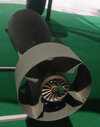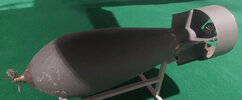Some more info on Norwegian bombs:
In 1936-1940, Raufoss Ammunition Factories (RA) Raufoss Ammunition Factories (RA) supplied 10 kg and 50 kg aircraft bombs (("sprengbombe") to the air force.
These bomb were filled with high explosive thta constituted between 10 and 15 percent of the bomb's own weight.
the 10 kg explosive bomb was thus filled with 1 kg of explosive. In the 50 kg aircraft bomb, the RA used 5 kg of high explosive.
The explosive was ignited with a fuse with a delayed ignition.
On impact, the bombs exploded into shrapnels weighing between 10 and 50 grams, spraying with a speed of up to 1000 meters per second.
In Julty 1939 a protoype of a 75kg bomb, containing 7.5kg of explosives, was produced by RA, followed by an order for such bombs in December of th same year.
These bombs were not fragmentation bombs (possibly SAP as the requirement was that - "they had to withstand impact against a hard target")
Howver these bombs were never produced or delivered due to production considerations: they were or more complex design, needed higher quality steel, used more explosive and disrupted the production of 50kg bombs. This also limited the production of 50 kg aerial bombs.
Production of bombs cntinued in 1940-41 - for the behalf of the Germans. The Germans use of these bombs is unknown but may explain why 10kg Nowegian bombs have found their way to museums in other areas such as the Nederlands.
Some more pictures of Norwegian bombs, including better pictures of some in the first post:
(all photographs are from Nowegian museums)
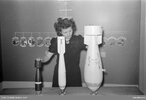
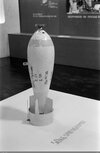
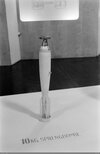
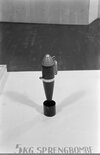
Although this last bomb is definitively identified as a 5kg Sprengbombe on this display from 1938, I did not find record of use of 5kg bombs by the Norwegian air force.
This bomb looks like a training bomb but the production data from RA speak only of 50kg training bombs (similar in shape to the 50 explosive bomb) - its p[ainting is also different from the one of the 2 other bombs. It could of course be an incendiary bomb. However it will still remain a mystery for the present time.
Here a surviving 10kg Sprengbombe
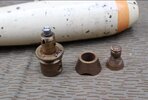
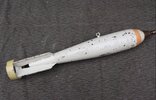
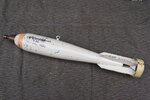
Tgis one is complete with a more complete fuze, from Delft museum:

And a surviving 50kg Sprengbombe at Oslo museum
